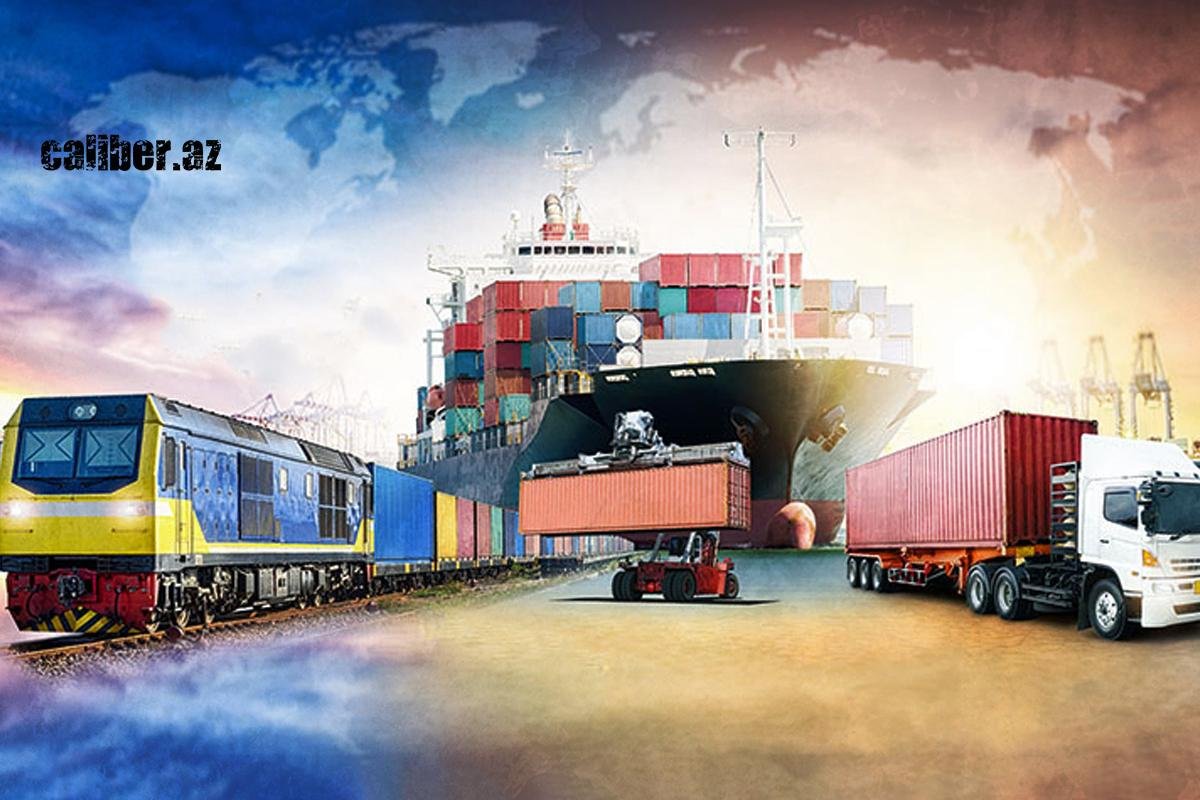Azerbaijan increases non-oil export despite global recession Review by Caliber.Az
Despite negative forecasts regarding the prospects for world trade, constrained by a recession in the EU and the US and a decrease in demand in a number of other regions of the world, Azerbaijan, due to the growth of investments and production in the non-oil sector, in January-April of 2023 was able to increase non-primary exports by over 21 per cent.
This not only testifies to the stability of the strategic vector - an increase in the share of non-oil products in foreign trade with an output of up to $ 5 billion by 2027 but also confirms the crisis resistance of the domestic economy, and its ability to successfully absorb external negativity.
Over the past two years, Azerbaijan has demonstrated unprecedented growth in non-oil exports. Thus, in 2021, the total volume of deliveries of non-oil and gas products exceeded $2.713 billion, having increased by a record 47.2 per cent. This positive trend continued in 2022 - goods worth more than $3,047 were sent abroad, which was 12.3 per cent higher than the year before last.
It should be noted that the unprecedented increase in non-oil exports from Azerbaijan took place against the background of the most complex and often negative processes in the world economy.
In particular, attempts to bring the world economic system out of the pandemic recession through unsecured money emission were accompanied by gross mistakes in the monetary policy of the US and the EU, which eventually led to hyperinflation and a global commodity crisis. All this negativity multiplied even more with the start of the Russian-Ukrainian war and the tough sanctions and logistical confrontation in the Eurasian space, which further inflated demand and prices for industrial and agricultural products.
However, the geopolitical crisis has opened a window of opportunity for many exporters from developing countries who have increased their exports to Europe and to the markets of other developed countries of the world many times over. The beneficiaries of the most complex global processes in the post-Soviet space were the republics of Central Asia, as well as non-bloc, neutral Azerbaijan, where domestic production maintained the necessary volumes, and most importantly, relatively more reasonable prices.
It is not surprising that strong external demand helped Azerbaijan multiply its exports to the markets of Türkiye, China, Europe and the Commonwealth of Independent States (CIS), including urea fertilizers, polymers, fuels, other petrochemical products, as well as building materials, ore concentrates, rolled aluminium, copper products and precious metals, fresh fruits and vegetables and processed food products, and in the last period - electricity.

Moreover, the flow of non-resource exports this year has not dried up, despite the recession observed in many regions of the world, which resulted in some reduction of surplus in foreign trade of Azerbaijan in the first quarter.
In particular, in January-February 2023 trade turnover with the EU countries increased by 2.3 per cent, but total exports (including oil and gas) to the EU, which reached 3.673 billion euros, decreased by 2.6 per cent against the first two months of 2022.
However, despite this negative trend, in January-April 2023, the rate of exports of Azeri non-oil products increased by 21.2 per cent, reaching $1.2 billion, according to the Centre for Analysis of Economic Reforms and Communications (CAERC). This is a good start, giving reason to hope for the full implementation of government forecasts on non-oil exports in 2023 at $3.5 billion.
The basis of exports in the reported period, as in the previous two years, was industrial products and electricity, and unlike previous years, in 2023 it was electricity supplies that became the main driving force of non-commodity exports.
According to Energy Ministry, in January-March 2023, electricity generation in Azerbaijan exceeded 7.756 billion kWh, an increase of 7.7 per cent compared to the same period in 2022.
At the same time, during the reported period, 16.6 per cent of all electricity produced, almost 1.239 billion kWh, was exported, thereby exceeding the corresponding figures for the first quarter of 2022 by 2.4 times. In general, over the year, the cost of electricity exports increased 6.1 times, amounting to $281.1 million.
This is a landmark moment for the Azerbaijani export strategy, since, unlike the export of raw materials, electricity supplies involve various manufacturing sectors and provide a higher level of added value. Last but not least, electricity exports are aimed at long-term cooperation with markets, including Türkiye, whose large civilian market and growing industry provided the basis for demand.
In turn, the share of deliveries of agricultural and agro-industrial products for four months accounted for $248.2 million, with an increase of 9.1 per cent. Moreover, according to CAERC, the export rates of agro-industrial products turned out to be much higher, their volumes amounted to $74.8 million with an increase of 53.8 per cent. Among other things, the export of raw cotton and fibre has noticeably increased, and the supply of alcoholic and non-alcoholic beverages has also increased six-fold.
Of course, despite the above achievements, it is necessary to further diversify the range of export goods, strengthen work to expand the participation of the non-oil sector in export operations, including by attracting a larger number of small and medium-sized businesses (SMEs), including small industries, service, construction companies, involving them in the process of developing foreign markets.
In this regard, much remains to be done: the structure of non-oil exports in Azerbaijan is almost completely dominated by large state and private companies that are part of various industries and other holdings. According to CAERC, the list of leading non-oil exporters includes Azerenergy OJSC, SOCAR State Oil Company and its constituent processing companies, Azeraluminum LLC, gold mining structures - AzerGold CJSC and Azerbaijan International Mining Company, Baku Steel Company LLC, MKT Istehsalat Kommersiya LLC, " APK Azerpambyg”, etc.

Unfortunately, SMEs are still predominantly represented in trade, services, intermediary services, construction and the agricultural sector. The participation of small and medium-sized businesses in non-commodity exports today does not exceed a quarter of the total volume of foreign supplies, and there are also many untapped opportunities for growth.
According to the four-year strategy for the socio-economic development of Azerbaijan until 2026, one of the main goals is to bring the share of small and medium-sized businesses in GDP in the non-oil sector to 35 per cent, the employment rate in the SME segment of the non-resource profile - up to 60 per cent, and it is also planned to significantly increase the export potential of this sector.
Finally, more efforts will have to be made to expand the geography of deliveries, primarily to the Chinese market, as well as the countries of the Persian Gulf, North Africa and Eastern Europe. So far, the lion's share of the products of the domestic non-oil sector is still focused on Türkiye, Russia, Georgia, Switzerland and several post-Soviet countries.
“Azerbaijan plans to significantly increase the export of non-oil products. Work is underway in the country to create new mechanisms for financing and supporting SMEs, industrial clusters and free economic zones also play an important role,” Azerbaijani Economy Minister Mikayil Jabbarov said during a recent event on the topic “Heydar Aliyev and the development of entrepreneurship in Azerbaijan.”
In particular, the specialists of Azerbaijan’s Export and Investment Promotion Agency (AZPROMO) have developed a strategy for the export of non-oil products for 2023-2026, the document reflects ways to expand non-primary exports, issues of solving problems inherent in this area. The document includes three basic principles: the creation of a new culture of export promotion in the republic, the production of products that meet the needs of foreign markets, as well as the dissemination of the Made in Azerbaijan brand in the world market, including through trade and wine houses, promotion and advertising of products within the framework of trade missions, international exhibitions and business forums. As part of the strategy, about 118 priority products for external supplies have been identified in seven main categories.
In general, according to the estimates of the Economy Ministry, by 2027 Azerbaijan can count on an increase in non-oil exports to at least $5 billion: the foundation for the implementation of such plans are considerable budgetary and private investments in the formation of numerous industrial clusters and agricultural parks.
So, only in the first half of 2022, the share of industrial zones in the production of non-oil products amounted to 14.9 per cent, and in non-oil exports, their share reached 33.1 per cent. Equally important is the involvement of foreign capital and technology in the production of competitive products that are in demand abroad. Some progress has also been made in this regard: total foreign direct investment (FDI) in the non-oil sector of Azerbaijan for 2018-2022 is estimated at $5.093 billion. In general, according to AZPROMO, over the past 5 years, the non-oil sector accounted for 21.2 per cent of all FDI in the Azerbaijani economy.
To all appearances, the capitalization of non-oil production and its role in production and exports will continue to grow this year. As First Deputy Chairman of the Central Bank Vugar Ahmedov recently noted:
“According to the results of 2023, GDP in the non-oil sector of the Azerbaijani economy will grow by 6 per cent. A significant role here is played by investments growing every year and the development of human capital.”








